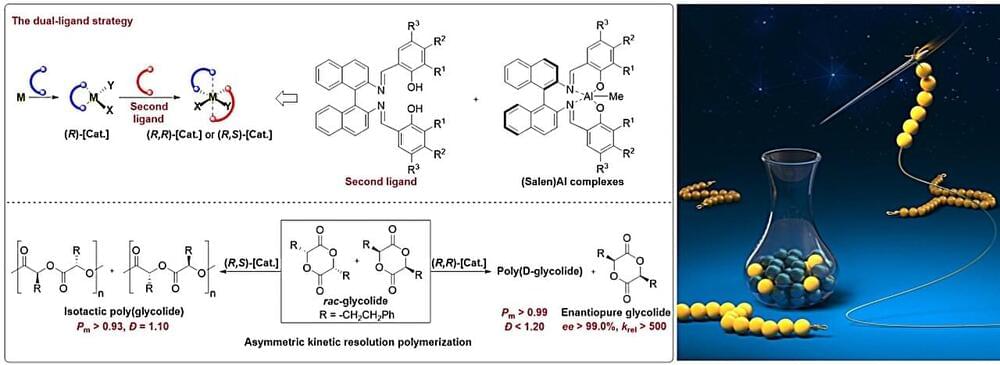Studies on the synthesis and application of chiral materials has important scientific significance and market value. However, the design, synthesis and application of chiral materials are still in their infancy, and relevant research is limited to natural chiral polymer materials and very few artificial synthetic chiral materials.
In response to the key problems of synthesis, characterization, and mechanism research in the field of chiral materials, researchers from the Qingdao Institute of Bioenergy and Bioprocess Technology of the Chinese Academy of Sciences have proposed a novel concept of “asymmetric kinetic resolution polymerization” (AKRP), which provides a new method for the efficient synthesis, direct characterization of chiral polymer materials, and a new approach for studying the reaction mechanism of asymmetric polymerization.
The challenge in achieving AKRP is the design and synthesis of highly enantioselective catalysts. To solve this problem, the researchers proposed the “dual-ligand” strategy for the first time, enabling the highly enantioselective chiral (BisSalen)Al catalysts. The research is published in Journal of the American Chemical Society.
